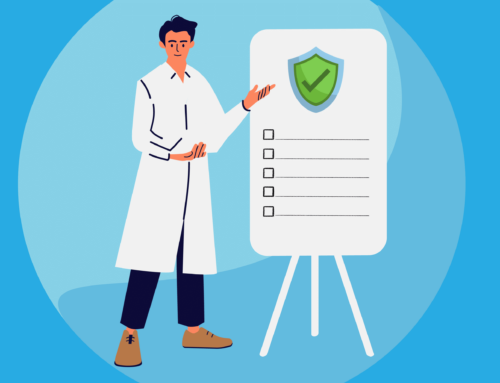Protecting patients and workers from harm is crucial in the ever-changing healthcare industry. Leaders, decision-makers, and providers at all levels can help identify and manage risk with an Occupational Safety and Health Administration (OSHA) risk assessment. This post examines OSHA’s recommended safety and health practices for assessing and reducing risk, including six steps for creating secure healthcare environments.
The Rationale for an OSHA Risk Assessment
Instead of waiting to respond to workplace incidents, the best form of protection is to proactively anticipate such hazards on an ongoing basis. For medical providers and healthcare organizations, maintaining the highest OSHA safety standards is vital for maintaining a safe and compliant setting. Conducting an OSHA risk assessment increases safety and ensures regulatory compliance.
OSHA Hazard Identification and Risk Assessment in Healthcare
OSHA stipulates that employers are obligated to “verify that the required workplace hazard assessment has been performed through a written certification that identifies the workplace evaluated; the person certifying that the evaluation has been performed; the date(s) of the hazard assessment; and, which identifies the document as a certification of hazard assessment.” Any healthcare OSHA risk assessment template should incorporate the following six action steps.
Action Step 1: Collect Existing Information About Workplace Hazards
Leaders work with employees to collect and review information to determine the typical hazards that may be present, including faulty equipment, unsafe structures, and toxic exposures. Individuals engaging in the assessment should consult such information sources as:
- Chemical safety data sheets (SDS)
- Current safety and health programs
- Employee surveys, self-reports, and committee meeting minutes
- Equipment operating manuals
- Industrial hygiene assessments, redacted medical records, and exposure monitoring results
- Inspection reports from government agencies and other external entities
- Job safety analyses
- OSHA 300 and 301 logs and other injury/illness reports
- Reports of injury and illness patterns
- Workers’ compensation reports
Action Step 2: Inspect the Workplace for Safety Hazards
Individuals should inspect workspaces for any hazards, such as worn tools, changes in operational protocols, or maintenance or housekeeping neglect. No space or process is immune to injury or illness, so inspection should include all activities and physical areas, including storage and warehousing, office equipment and functions, and contractor-related activities.
Organizational leaders should involve employees as much as possible in conducting on-site inspections. Workers can help develop inspection checklists for various departments, such as housekeeping, electrical hazards, fire protection, ergonomic issues, workplace violence, and other areas.
Action Step 3: Identify Health Hazards
Hazards in medical and healthcare settings are varied and numerous. They include:
- Biological: Infectious diseases, bodily fluids, molds, toxic plants, animal material, bloodborne pathogens
- Chemical: Adhesives, paints, solvents, poisonous dust, drug exposures, crystalline silica dust
- Ergonomic: Heavy lifting, machine-related vibrations, repetitive motions
- Physical: Heat, noise, radiation, lasers, x-ray exposure, waste anesthetic gas, workplace violence
In addition to documenting the hazards and risk factors, individuals should examine redacted patient and worker medical records for such cases as musculoskeletal injuries, chemical exposures, skin irritations, or other adverse health effects. Air sampling and other quantitative measures can detect other exposures.
Action Step 4: Conduct Incident Investigations
Workplace incident investigations uncover existing hazards and any near misses. Documenting and reporting each incident creates a record that can inform future assessments and pinpoint ongoing and future hazards. To ensure quality investigations in the future, organizations should:
- Develop an investigation protocol that stipulates proper communication channels, who should participate in each investigation, and reporting templates
- Provide training on objective incident investigations
- Ensure that investigative teams include workers and managers
- Pinpoint the root causes of each incident
- Report the outcomes of all investigations to management, workers, and other stakeholders
Action Step 5: Identify Hazards Associated with Emergency and Nonroutine Situations
Incidents can result from crises, such as fires or other natural disasters, and emerge from nonroutine events, like maintenance shutdowns. Risk assessments must identify factors that make the organization susceptible to foreseeable events, including:
- Chemical releases and spills
- Disease outbreaks
- Explosions or fires
- Inclement weather
- Repairs following mechanical failures
- Building or structural collapse
- Startups following unscheduled shutdowns
- Workplace violence
Action Step 6: Characterize the Nature of Identified Hazards, Identify Interim Controls, and Prioritize Hazards for Control
After identifying all potential hazards, individuals need to brainstorm the types of incidents that these hazards could bring about. During this stage of OSHA risk assessment, organizational members should:
- Assess each potential outcome for its severity, frequency, and number of people affected
- Identify temporary control measures until permanent ones go into effect
- Prioritize the hazards and potential outcomes so that decision-makers and leaders can address the most severe ones first
At Compliancy Group, we know that anticipation is the best protection against healthcare workplace hazards. Contact us today for guidance on conducting your OSHA hazard identification and risk assessment. You can also download our free guide to OSHA medical compliance.








